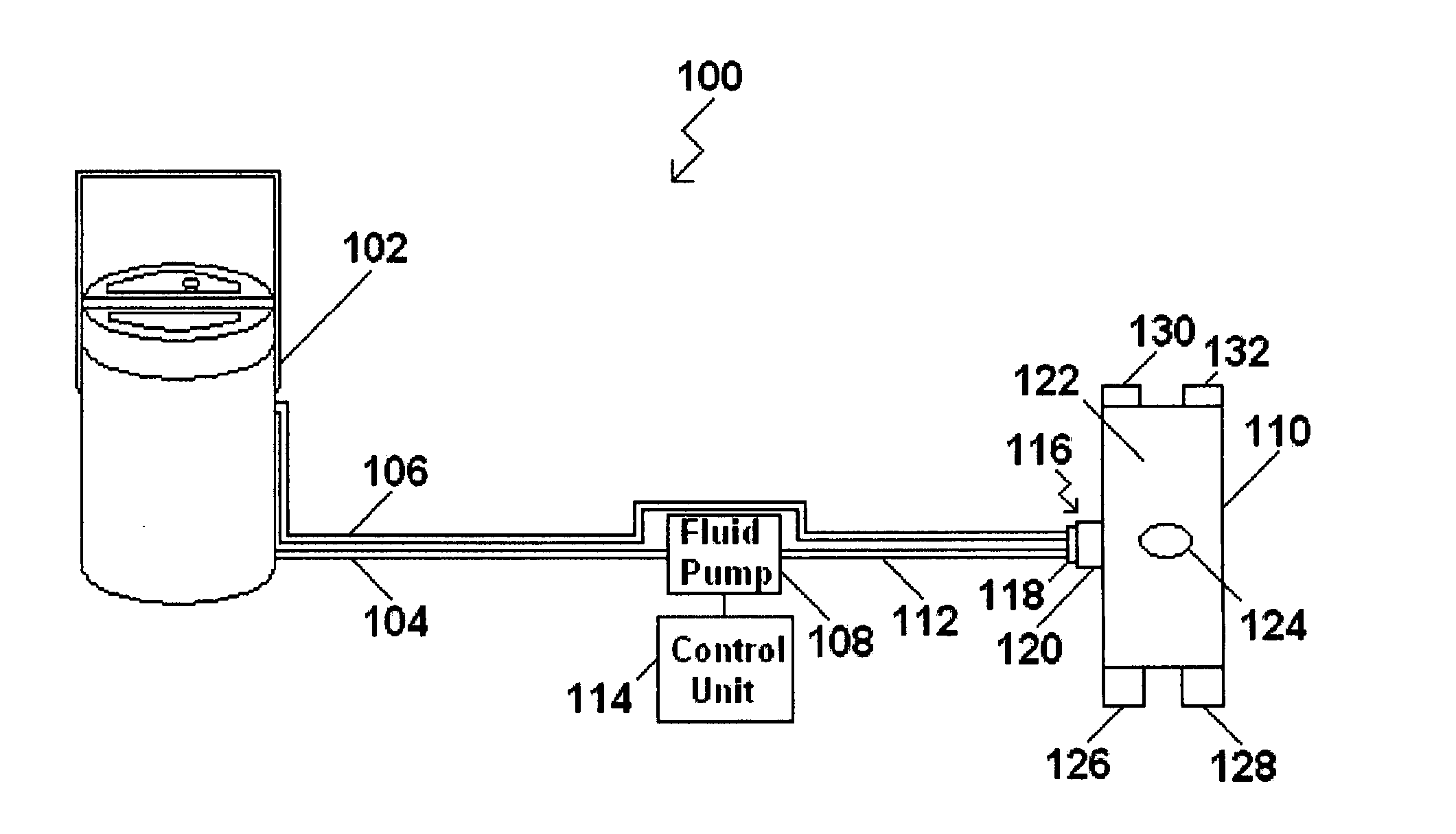Thermal joint and bone compression system
a technology of bone compression and joint, applied in the field of thermal joint and bone compression system, can solve the problems of not meeting the needs of maximizing compression, lack of design in several areas of improvement, and device not covering the areas needed to cover efficiently, etc., and achieve the effect of quick and easy connection
- Summary
- Abstract
- Description
- Claims
- Application Information
AI Technical Summary
Benefits of technology
Problems solved by technology
Method used
Image
Examples
Embodiment Construction
[0026] Referring to FIG. 1, a thermal compression system 100 is illustrated that is used to apply hot or cold fluid in combination with compression to a portion of a limb of a human body or an animal body. While the thermal compression system 100 disclosed herein may be used with hot or cold fluid, a majority of the description set forth below will focus on the use of cold fluid where its greatest use is anticipated. The thermal compression system 100 illustrated in FIG. 1 is formed to treat a knee of an individual. However, it should also be recognized that other areas of the body may be treated using one of several thermal compression systems 100 that may be formed in various different shapes designed to accommodate different areas of the human body.
[0027] The thermal compression system 100 may include a fluid container 102 that may be used to hold cold or hot fluid. In the case of cold fluid, the fluid container 102 may be filled with ice and water or any other suitable fluid th...
PUM
 Login to View More
Login to View More Abstract
Description
Claims
Application Information
 Login to View More
Login to View More - R&D
- Intellectual Property
- Life Sciences
- Materials
- Tech Scout
- Unparalleled Data Quality
- Higher Quality Content
- 60% Fewer Hallucinations
Browse by: Latest US Patents, China's latest patents, Technical Efficacy Thesaurus, Application Domain, Technology Topic, Popular Technical Reports.
© 2025 PatSnap. All rights reserved.Legal|Privacy policy|Modern Slavery Act Transparency Statement|Sitemap|About US| Contact US: help@patsnap.com



